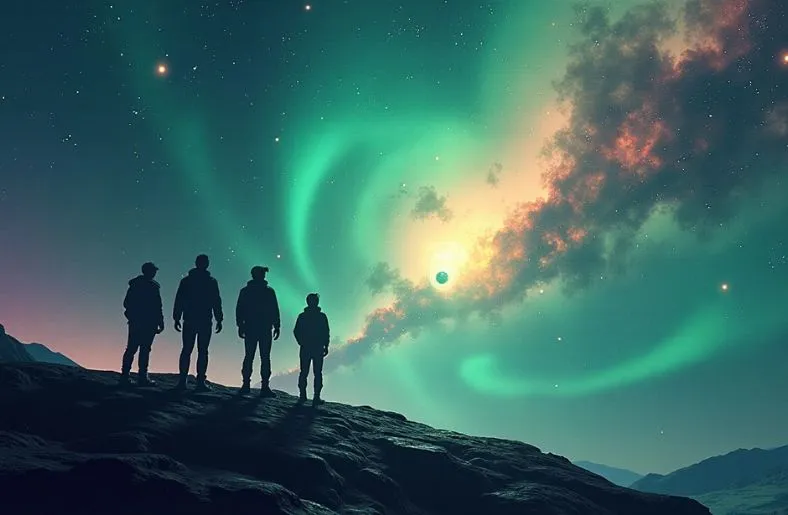Introduction
Have you ever wondered about the hidden wonders of the universe? One of the most fascinating cosmic phenomena is Starhoonga. This mysterious object has captivated the curiosity of scientists and space enthusiasts alike.
Starhoonga is not just another star. It holds secrets about the birth and evolution of galaxies. Its unusual characteristics make it a key subject of study in astronomy.
In this post, we’ll take you on a journey to explore Starhoonga. We’ll dive into its origins, unique features, and the impact it has on nearby stars and planets.
Through the discoveries made so far, Starhoonga has become more than a cosmic curiosity. It’s a tool that helps us understand the universe. Join us as we unravel the mysteries surrounding Starhoonga and what makes it so unique in the vast cosmos.
The Origins of Starhoonga
The story of Starhoonga begins with a surprising discovery. Astronomers first noticed it using advanced telescopes. They saw strange light patterns coming from a distant region of space. This sparked curiosity and excitement among researchers.
At first, scientists struggled to understand what they were seeing. The patterns didn’t match any known cosmic objects. After much study, researchers realized Starhoonga was not a typical star. It was the result of a massive collision between two celestial bodies.
This collision happened millions of years ago. The event created a new cosmic structure, which became Starhoonga. Scientists believe this event shaped its unique characteristics. It is unlike any other star, giving it a special place in space studies.
As research continued, experts realized that Starhoonga might offer clues about the universe’s formation. The energy from the collision and the materials created could help us understand how galaxies and stars are born. This discovery has opened new doors in space science, offering a fresh perspective on how our universe evolves.
In short, Starhoonga’s origins are linked to an ancient cosmic event that still impacts our understanding of space today.
What Makes Starhoonga Unique?
Starhoonga is unlike any star we’ve seen before. It shines in a variety of colors, constantly changing its hue. This shifting light is a key feature that sets it apart. Most stars have a steady glow, but Starhoonga’s kaleidoscopic display keeps scientists intrigued.
Another unique trait is its composition. Researchers believe it contains rare elements that aren’t commonly found in other stars. These elements could provide important information about how stars and galaxies form. Studying Starhoonga could help scientists understand the building blocks of our universe.
In addition to its unusual light and makeup, Starhoonga has strange gravitational effects. Its massive pull influences nearby objects in space. It can alter the paths of planets and stars around it, creating unusual orbits. These gravitational forces challenge what we know about space physics.
Starhoonga is also bigger than most stars, but not as massive as black holes. It occupies a unique space in the middle. This unusual size makes it difficult to categorize. It doesn’t fit neatly into any typical star classification.
Theories and Studies on the Formation of Starhoonga
Many theories attempt to explain the formation of Starhoonga. One popular idea is that it resulted from a massive collision between two celestial bodies. This collision likely created the energy that powers Starhoonga’s unique features. Such an event would also explain its unusual luminosity and size.
Another theory suggests that dark matter could play a role in shaping Starhoonga. Dark matter surrounds galaxies and exerts gravitational forces. Some scientists believe that these forces may have affected the formation of Starhoonga, making it behave in unexpected ways.
Recent studies have used powerful simulations to test these ideas. By studying cosmic data, researchers can model how Starhoonga might have formed. These simulations help them explore different scenarios and understand the forces at work.
Powerful telescopes, like the Hubble and James Webb, have also contributed valuable insights. Observations from these instruments allow scientists to see Starhoonga in more detail. Each discovery brings new clues to the puzzle of its formation.
The Impact of Starhoonga on Surrounding Celestial Bodies
Starhoonga has a powerful influence on nearby celestial bodies. Its immense gravitational pull shapes the orbits of nearby planets. This strong force can cause planets to move in strange, unpredictable paths. As a result, Starhoonga creates complex dynamics within its cosmic neighborhood.
Additionally, Starhoonga emits intense radiation and energy waves. These waves can affect the atmospheres of nearby planets. For instance, they may strip away gases, which could alter the climate. Such changes could have a big impact on any potential life forms in those environments.
Nearby stars also feel the effects of Starhoonga. The energy from Starhoonga may trigger unusual stellar activities. For example, some stars might experience flares or even supernova explosions. These events offer important insights into how stars evolve over time.
In some cases, Starhoonga’s energy might even alter the structure of nearby star systems. It can cause stars and planets to interact in unexpected ways, further challenging scientists’ understanding of astrophysics.
Overall, Starhoonga plays a major role in shaping its cosmic surroundings. Studying these impacts helps scientists learn more about how celestial bodies interact and evolve in the universe.
Challenges in Studying Starhoonga
Studying Starhoonga presents many challenges. Its distance from Earth makes it hard to observe closely. Despite using powerful telescopes, scientists often struggle to get clear images. The vast space between Starhoonga and Earth means that any data we receive is delayed, making real-time study difficult.
Another challenge is its immense energy. it emits powerful radiation, which can interfere with the equipment used to observe it. This radiation can disrupt signals and cause equipment malfunctions, making accurate measurements harder to obtain. Scientists need special tools to filter out this interference.
Additionally, Starhoonga‘s unique characteristics make it hard to study. Its gravitational pull and intense energy fields complicate our understanding of its behavior. Researchers often face difficulty in predicting how it will affect its surrounding environment. This unpredictability adds to the complexity of studying it.
Finally, the lack of close-up exploration is a significant barrier. Unlike planets and moons, we cannot send spacecraft directly to Starhoonga. This limits our ability to gather detailed data from the source. Until new technology or methods become available, studying it will remain a challenge for scientists.
Despite these difficulties, researchers continue to push forward. They are finding new ways to overcome obstacles and learn more about Starhoonga. With each breakthrough, we get closer to understanding its mysteries.
The Role of Advanced Technology in Unlocking Starhoonga’s Mysteries
Advanced technology plays a key role in studying Starhoonga. Without the latest tools, scientists would struggle to gather essential data. Powerful telescopes, like the Hubble Space Telescope, allow researchers to observe distant objects, including Starhoonga. These telescopes capture images that provide a clearer view of its structure.
In addition to telescopes, specialized instruments are used to analyze Starhoonga‘s radiation. These instruments help filter out interference and capture accurate readings. With advanced sensors, scientists can measure the energy emitted by Starhoonga. This data is crucial for understanding its behavior and impact on surrounding celestial bodies.
Artificial intelligence (AI) has also become a valuable tool in studying it. AI algorithms can process vast amounts of data quickly. This helps scientists detect patterns and predict how it may behave in the future. By using AI, researchers can make more accurate predictions and refine their understanding of Starhoonga.
Moreover, space missions equipped with cutting-edge technology are on the horizon. These missions aim to bring us closer to Starhoonga and gather even more detailed information. New technologies, like enhanced spacecraft and deep-space probes, will help expand our knowledge and answer more questions about it.
Conclusion
In conclusion, Starhoonga remains one of the most intriguing cosmic phenomena in modern astronomy. Its mysterious origins, unique characteristics, and powerful impact on surrounding celestial bodies make it a fascinating subject of study. Despite the challenges scientists face in observing and understanding it, advancements in technology and research continue to unlock new insights. As we explore this enigmatic object further, we not only deepen our understanding of the universe but also gain valuable knowledge about the forces that shape galaxies and stars. The journey to uncover the full mysteries of it is just beginning.




